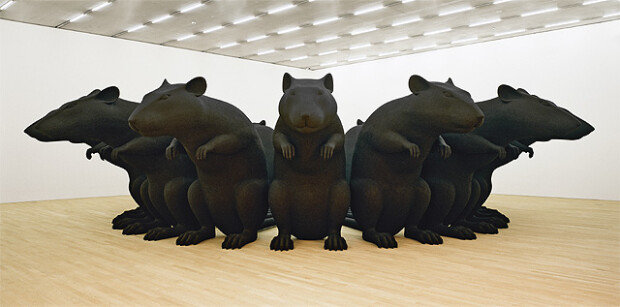The Gordian Knot
The Gordian Knot
Posted January. 02, 2020 08:17,
Updated January. 02, 2020 08:17

Giant rats, bigger than humans, stand in a circle. Leaning towards the outside of the circle, they are holding their front legs up high. The giant rats want to go ahead, but they can’t budge as their tails are tied together. Rat King, created by German sculptor Katharina Fritsch, garnered great attention for its strong image and overwhelming scale at the Venice Biennale in 1999. Why did the sculptor choose rats as a theme?
The sculptor is famous for painting his sculptures in recognizable shapes such as snakes, chickens, the Pope in black and other strong colors. Inspired by fairy tales or legends, the artist expressed the image of Rat King based on a story she had known as a child. Though they symbolize diligence, wisdom, abundance in the Buddhist culture, mice were perceived negatively in the Western culture, usually associated with the pest disease. Rat King, which is Rattenkönig in German, refers to a group of mice whose tails are tied together. It is often used as a metaphor to refer to a stream of unpleasant or complicated events. The sculptor explains that these mice are a reflection of herself and a highly complicated situation that cannot be relieved. Gordias, in Greek mythology, was a king that tied his wagon on the pillar of a temple. Oracle said that the one who unties the know would become the king of Asia. Many tried to no avail. The one that finally succeeded was Alexander the Great, who actually cut the knot instead of untying it. The Gordian Knot has become a proverbial term for a problem solvable by bold action.
The message appears to be clear. These mice have been together for so long that their tails have been tied together. Unless they escape the situation, they are doomed. To survive, they must be decisive. Whether it involves work or a relationship, difficult situations can be faced by anyone at any time. The solution may be simpler than you think.







